

A hunting lease agreement form is a type of legal lease form which is used by a lot or property owner who wants to have his property be leased out for hunting purposes. In this agreement, the hunter who will be the client of the property owner will be referred to as the lessee. This form allows the property owner to communicate effectively with the hunter or the lessee especially in protecting the property wherein the lessee will be executing a hunting activity.
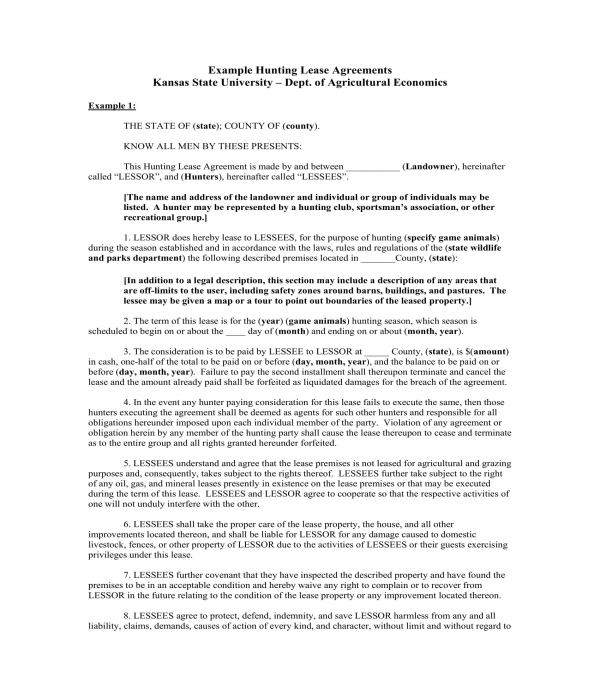
wabaunsee.k-state.edu
File FormatHunting lease agreement forms are important to be created and used due to the following reasons:
In any type of lease, the lessor and the lessee must arrive at a common agreement of the terms and conditions that they will be obeying throughout the period of the lease. These terms and conditions, rules, regulations, and clauses must be defined and explained properly in the hunting lease agreement so that both parties will have a set of guidelines to aid them and to help them if there are concerns and issues that will arise in lieu of the agreement.
An agreement will not be complete without a termination clause, be it a legal agreement or a simple contract form. And when it comes to hunting lease agreement forms, the limitations that the hunter must keep in mind when hunting in the leased property should be specified efficiently ranging from the varieties of prohibited activities and the location of the ends of the property included in the lease. In the event that one of the parties violates a statement in the agreement form, the other party who was able to adhere on the rules and regulations of the agreement must mandate and execute a penalty or sanction to the violating party immediately.
Some of the common sanctions include the payment of additional fees and payments that the violating party will have to provide as well as the termination of the agreement after the violation is proven.
Each party in any agreement, especially in hunting lease agreements, will have their own respective roles and responsibilities. These must be followed accordingly and should be retained unless the lease ends or will be terminated.
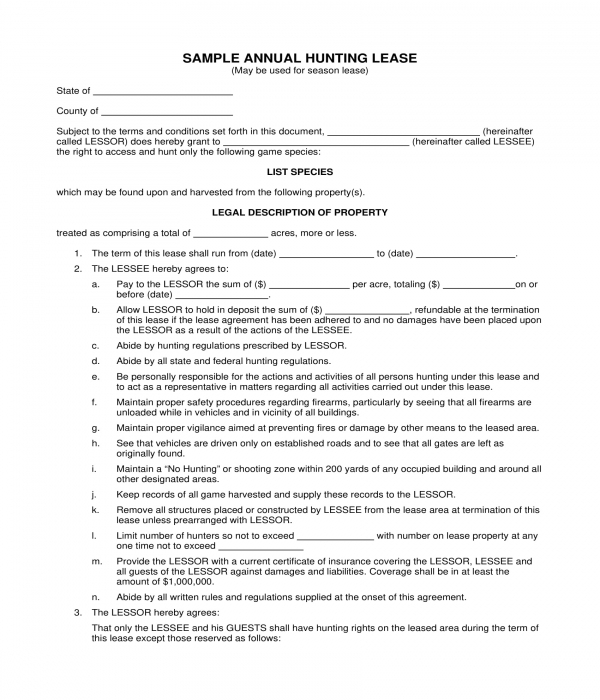
reynwoodforest.com
File FormatThe varieties of information which will be included in a hunting lease agreement form will differ and will depend on the preferences of the parties involved, especially on the needs and intents of the property owner. Regardless of the variety, each hunting lease agreement form should be able to include the following information for an effective and efficient agreement between a hunter and a property owner:
The parties involved – In any hunting lease agreement form, the identifications of the parties and their assigned roles in the lease agreement must be stated. The name of the lessee who is the hunter or the renter of the property and the name of the lessor who is the land or property owner must be disclosed along with their addresses and contact information.
The term of the lease – This part of the form will state the start and end date of the lease or the number of days, months, and years wherein the lease will remain in effect.
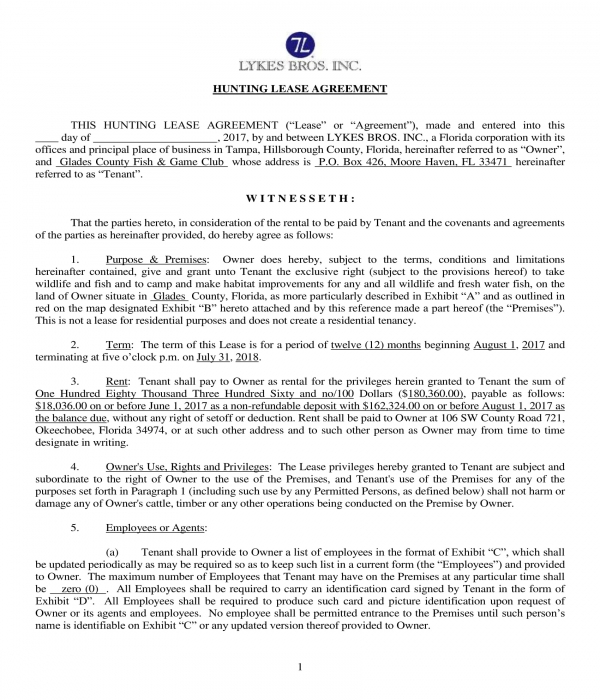
gladescountyfishandgameclub.com
File FormatConsiderations to be paid – The total amount that the lessee will be paying for leasing the property or the land during the lease period should also be indicated in the form. Other fees which are expected to be paid by the lessee should also be defined as well as the location of where the payments will be sent and the due dates of each payment.
Failure to execute clause – In the event that the lessee or the lessor fails to execute the terms, specifically the considerations to be paid, the penalties, sanctions, and the events which will take place will be stated in this clause or section of the form.
The lease – This is also known as the property description section of the form wherein the general information of the land property will be indicated. The measurement of the land, the inclusions of the lease such as the use of a shelter and hunting equipment, and the exact address of the property are some of the pieces of information to be disclosed in this portion of the form.
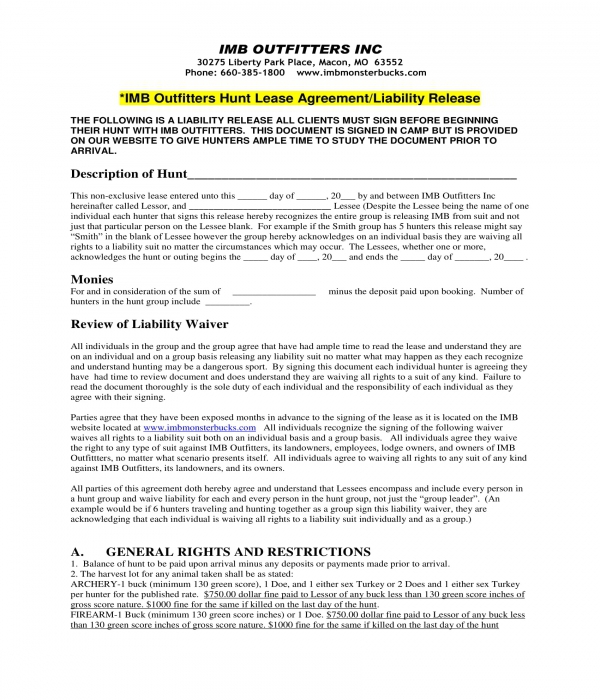
imbmonsterbucks.com
File FormatMaintenance – The specific maintenance and repair procedure that the lessee must meet during a particular period within the lease will be identified in this clause. In addition, the range of maintenance needs which will be shouldered by the land property owner can also be included in the form.
Waived rights of the lessee – Hunting activities can be dangerous especially if the hunters or the people taking charge in the activity fails to be prepared of the various possibilities that will happen in the land property. This is why it is important that the land property owner will be able to protect himself from any liabilities which may arise due to the incapabilities and unpreparedness of the lessee when conducting any activity in the leased property. For this, a waived rights clause along with a hold harmless agreement statement must be stated in the form. The purpose of a waived rights clause and a hold harmless agreement statement is to document the willingness of the lessee to waive his rights in filing any legal complaint and lawsuit against the lessor for damages and injuries incurred by him in the duration of the lease.
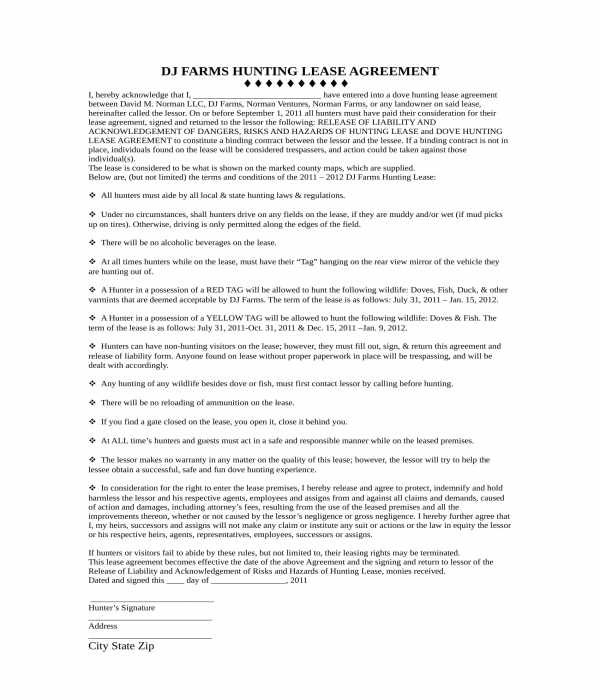
rguns.com
File FormatAside from the essentials mentioned above, there are also other clauses which can be included in the agreement form. However, these clauses are considered as optional since it depends on the land property owner. Enlisted below are some examples of optional clauses that land property owners can add on to their hunting lease agreement forms:
Another common restriction is the limitation of using four-wheeled motorized vehicles and in using the pre-existing roads in the property. Fires and conducting camping programs are also some of the most important restrictions that land property owners should include especially if the premises of the property is surrounded by grass, plants, and trees of different types in order to conserve the peace of nature.
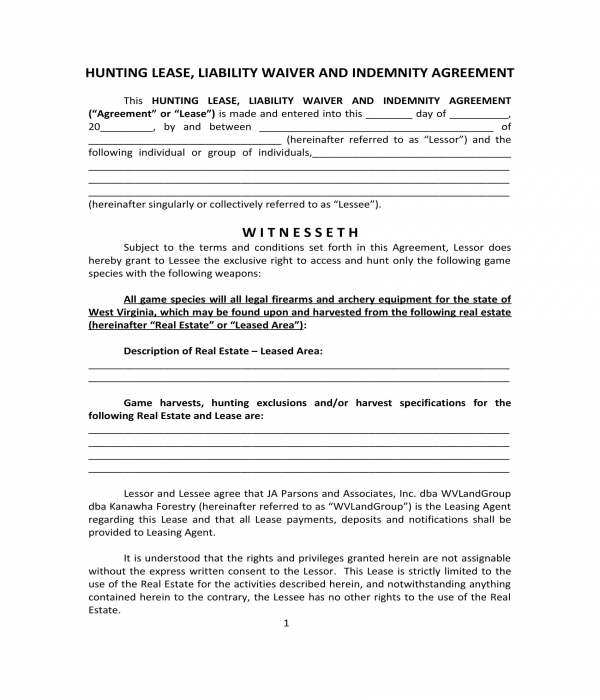
wvlandgroup.com
File FormatRegardless of the covenants and the clauses, a lessor must note that he should be fair to the lessee and that he must inform the lessee of any changes and updates which will affect a term or agreement in the lease to ensure prompt and proper communication.